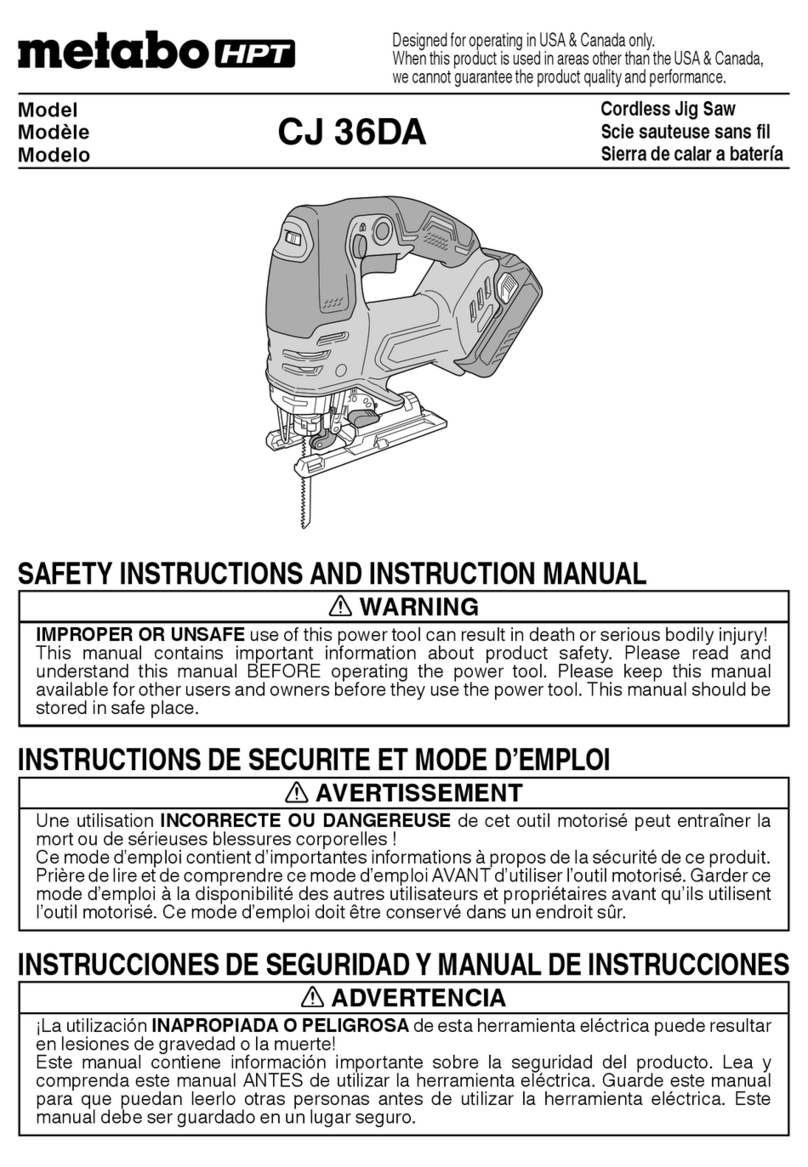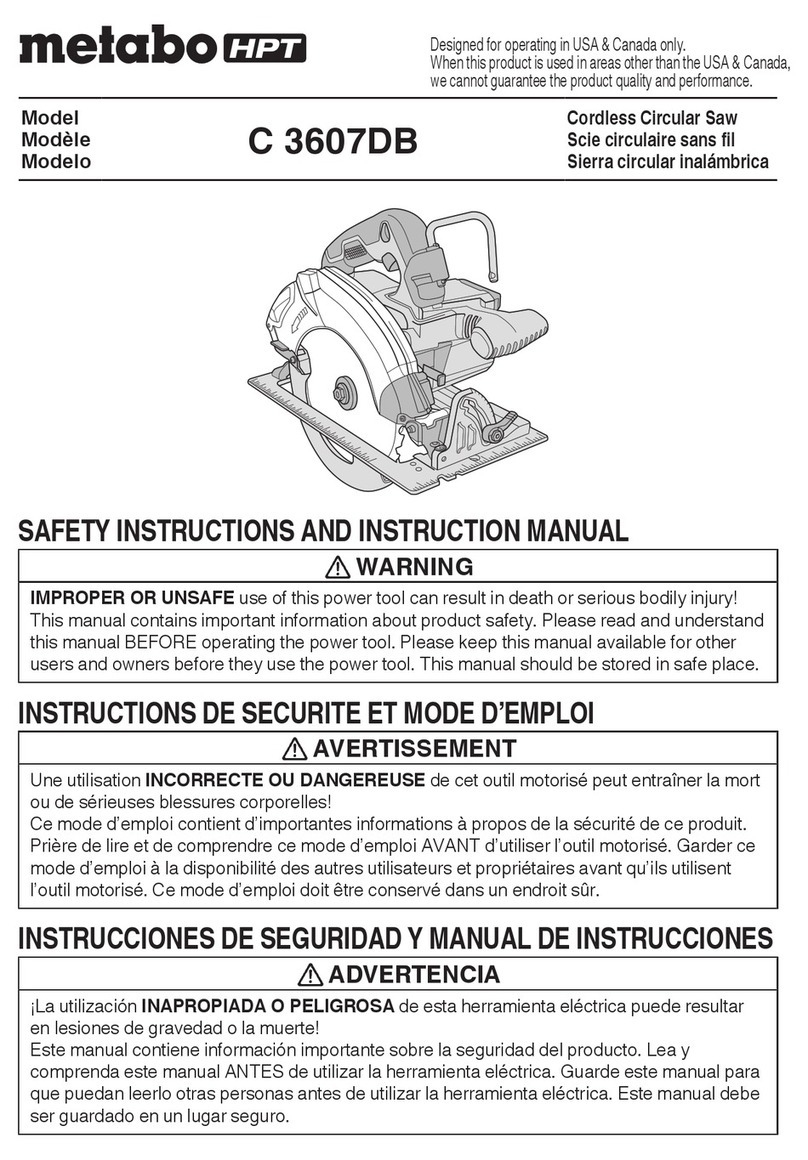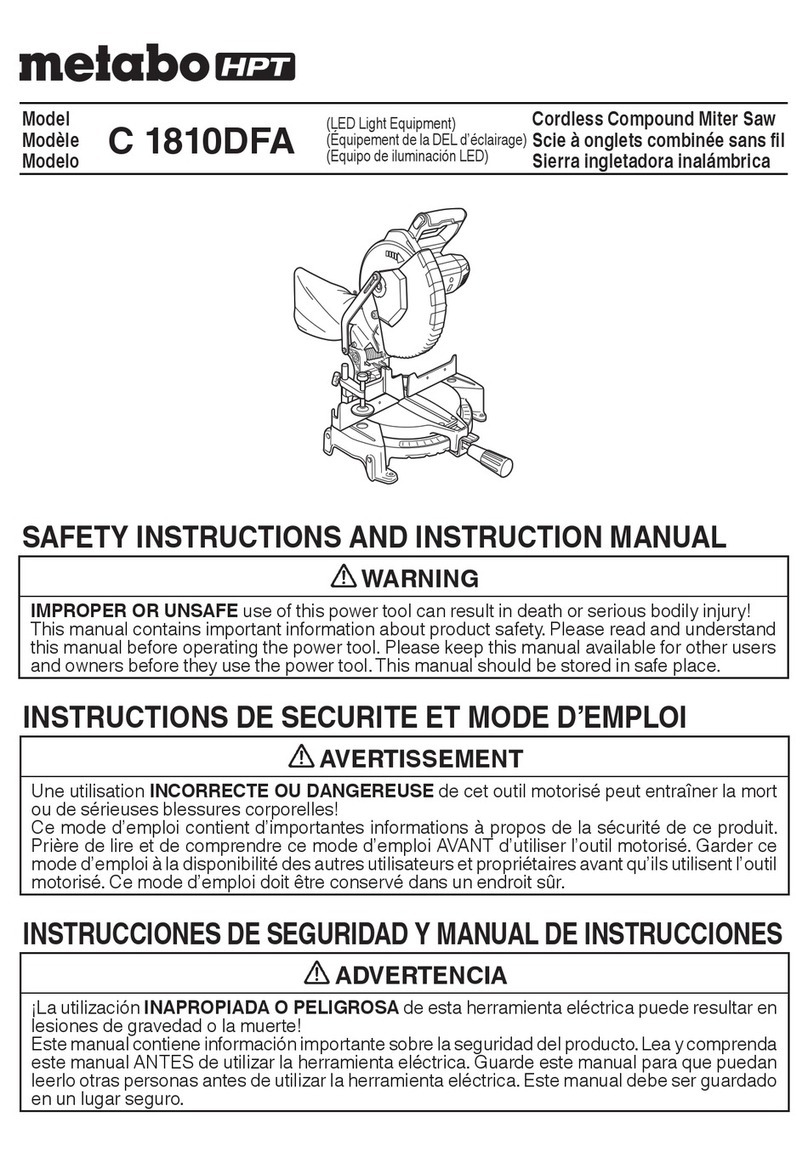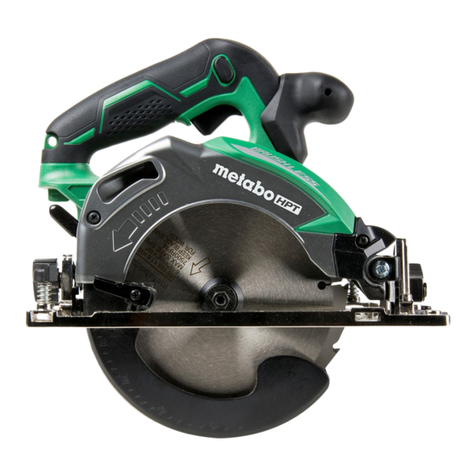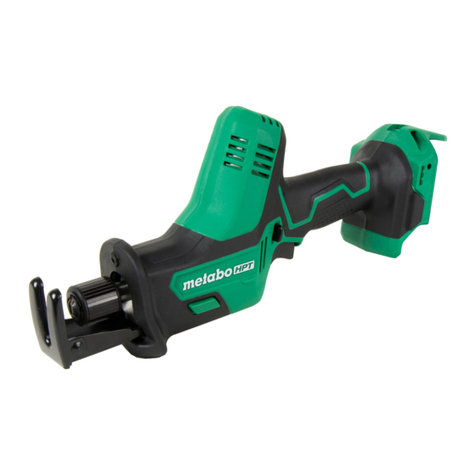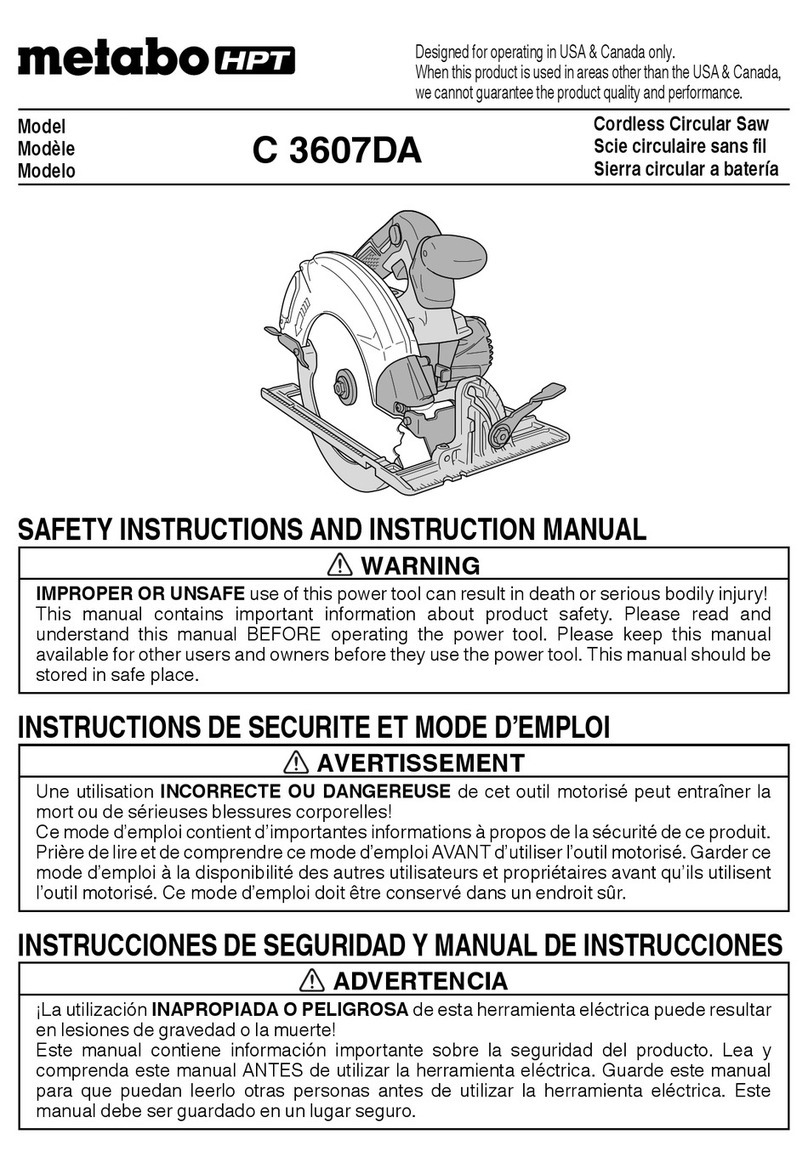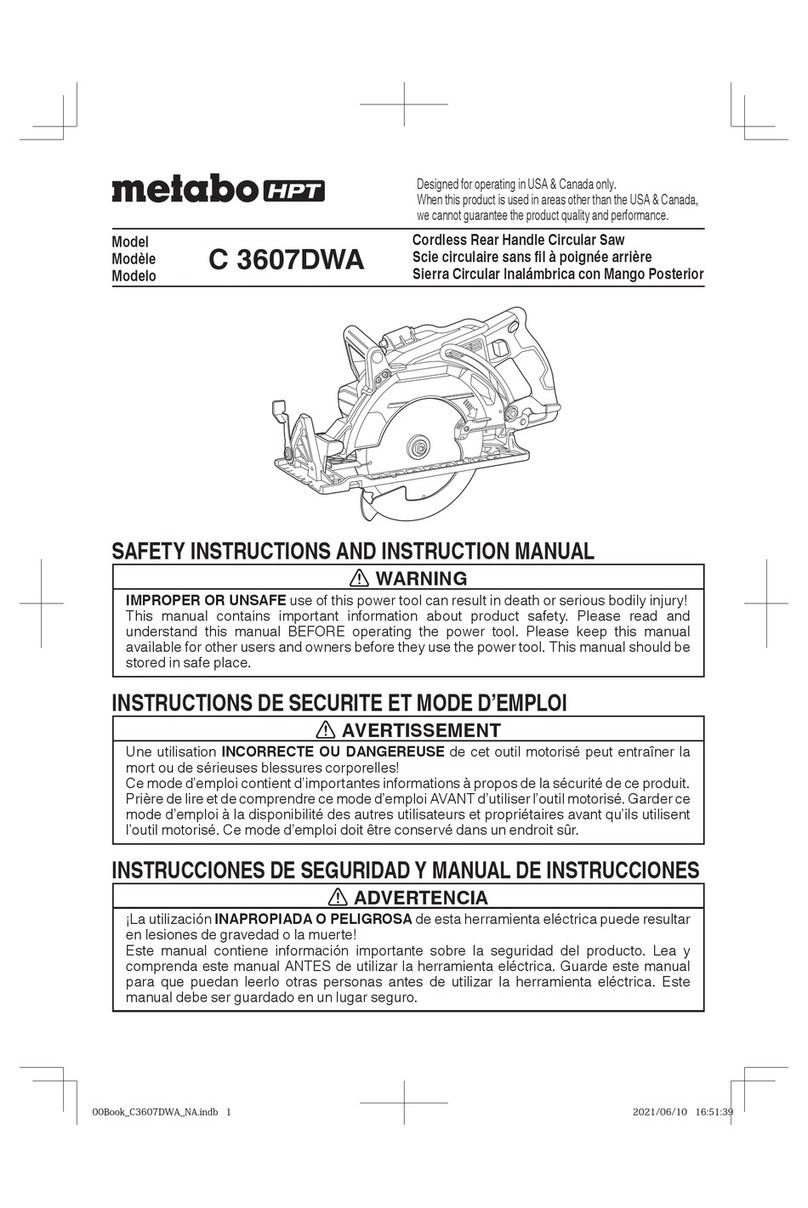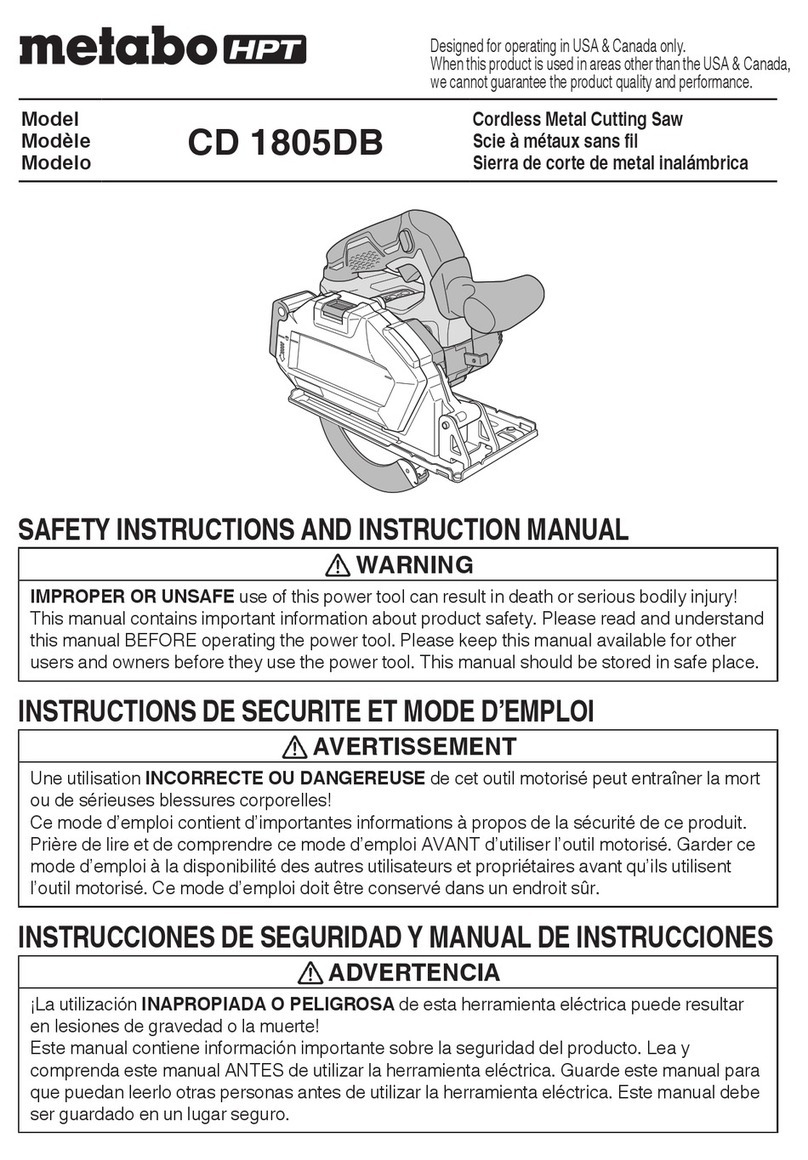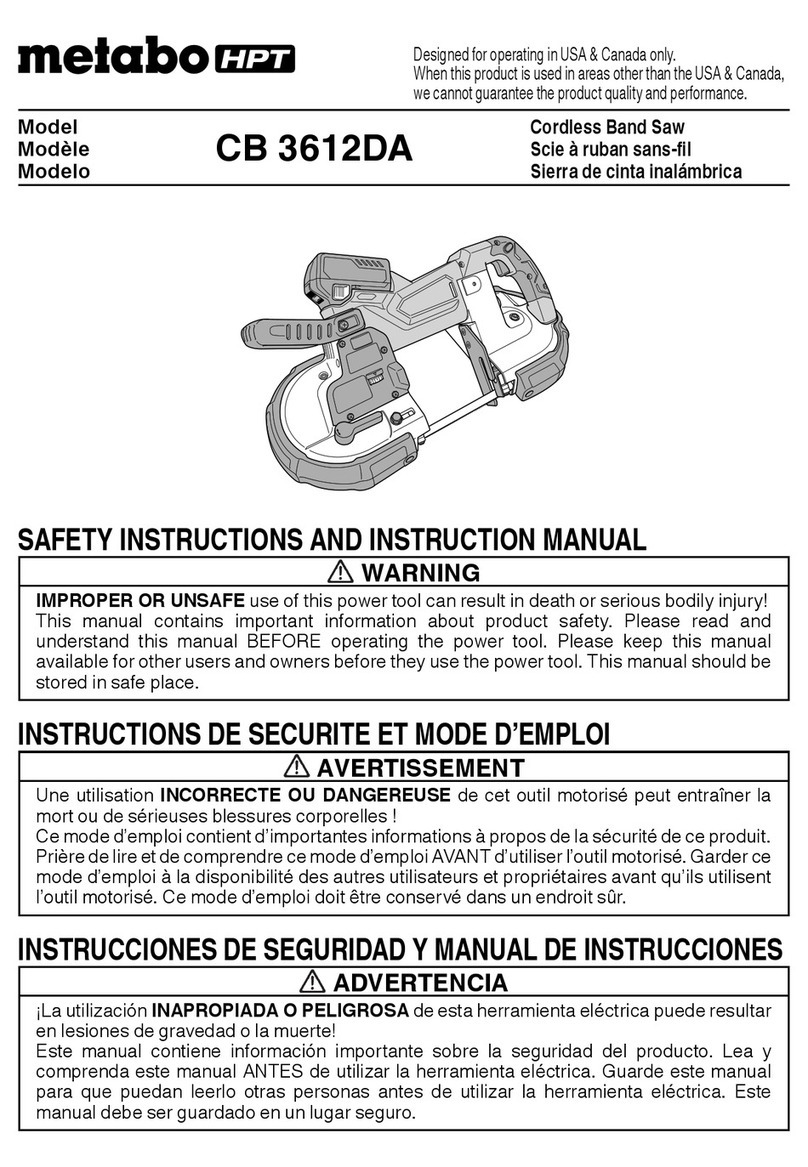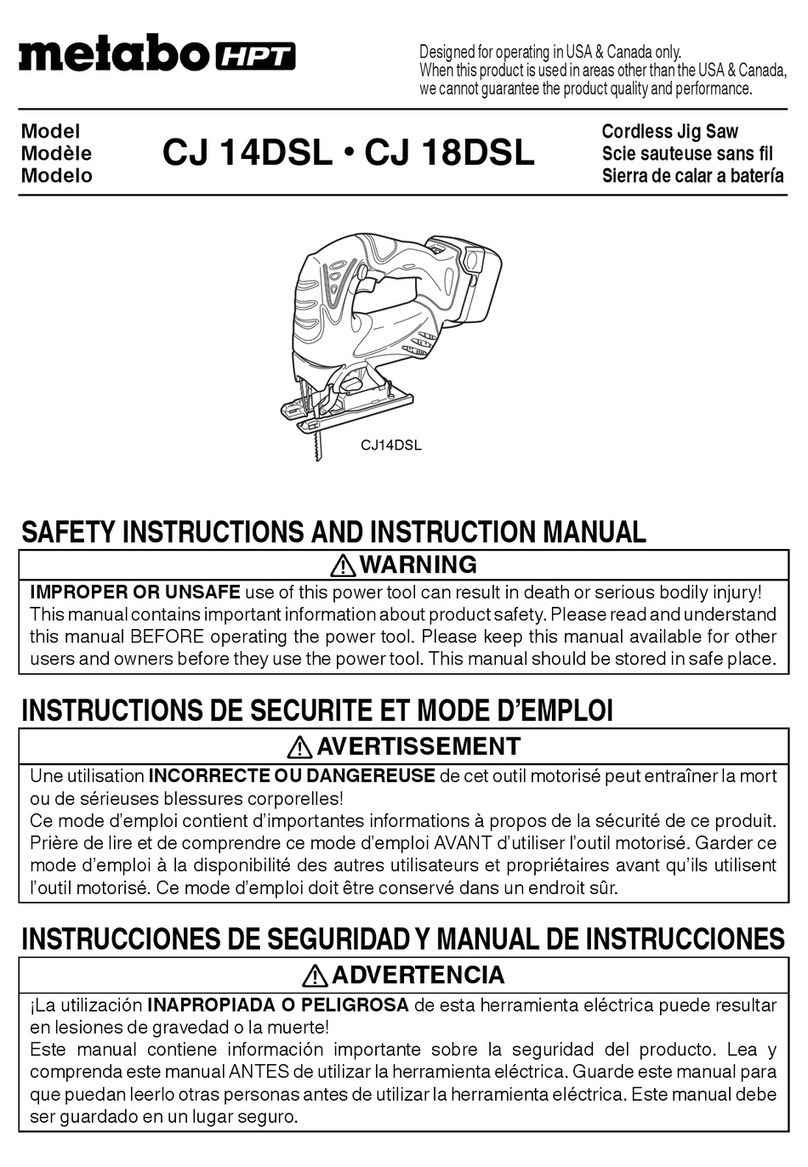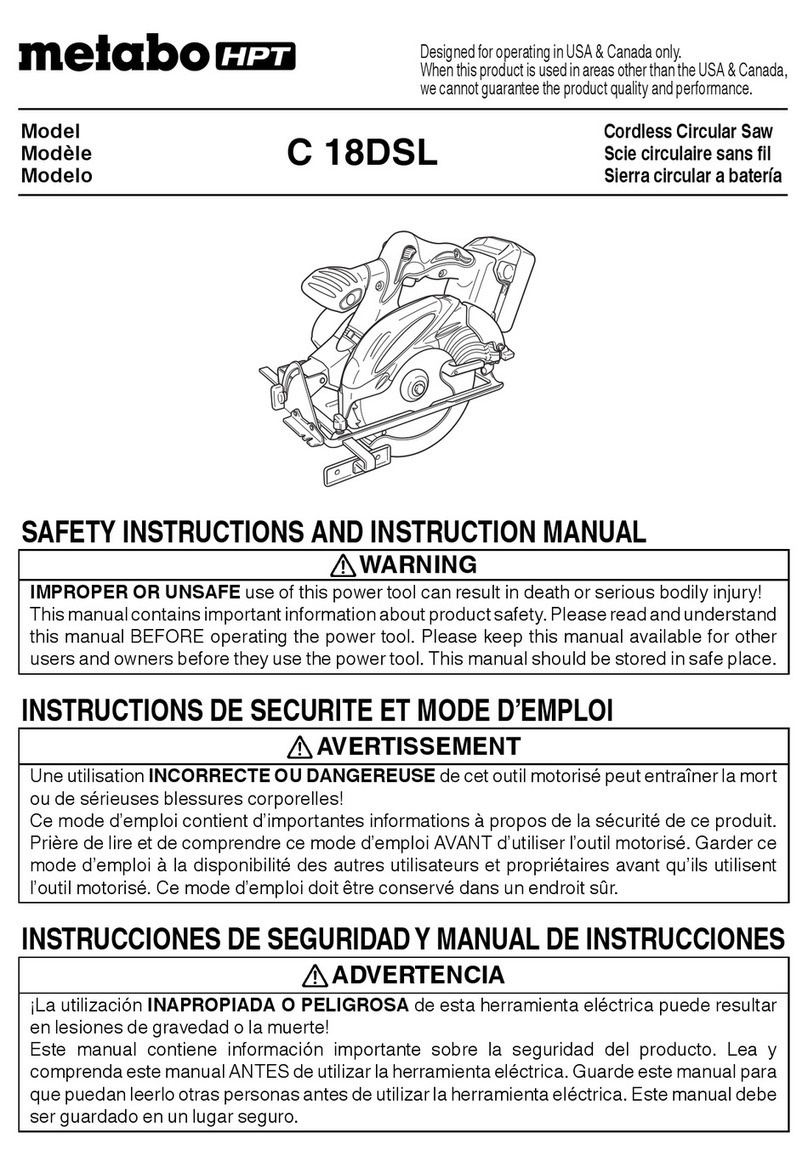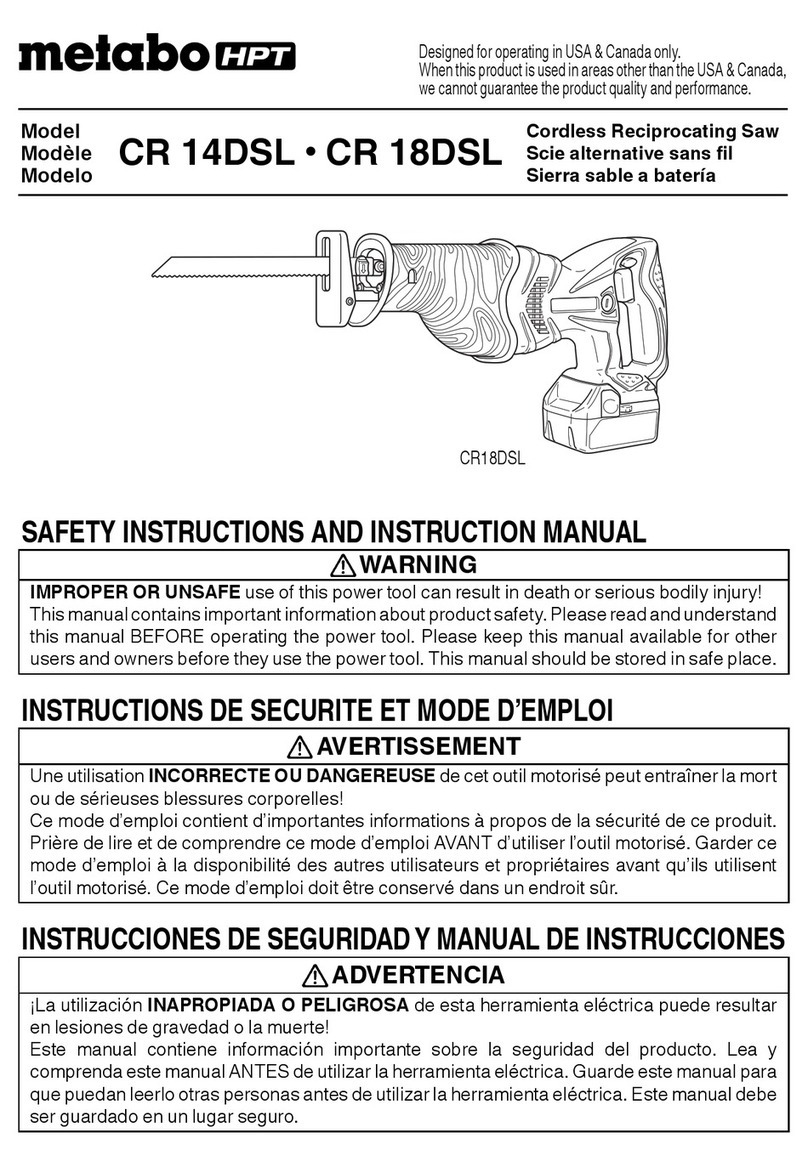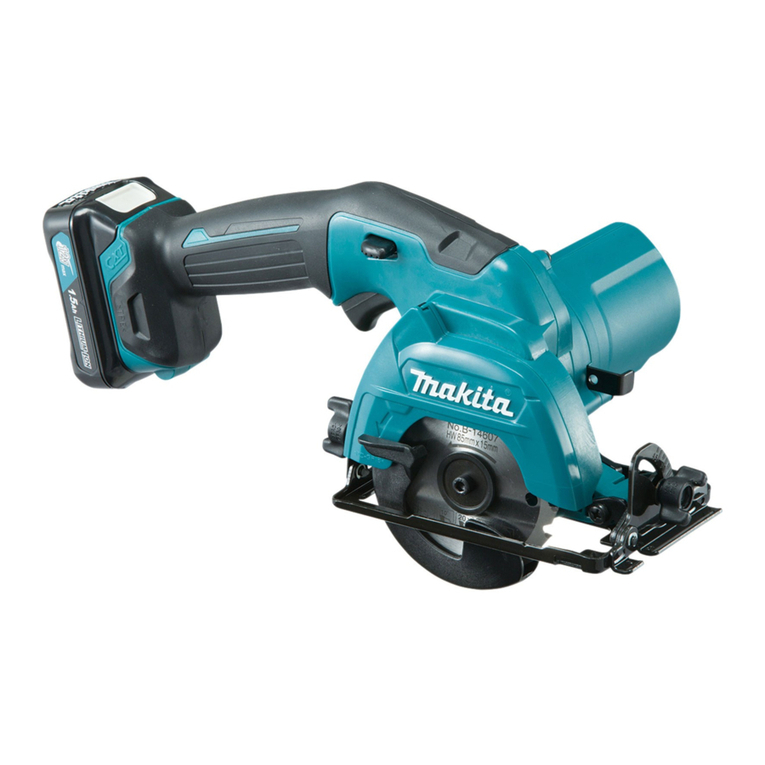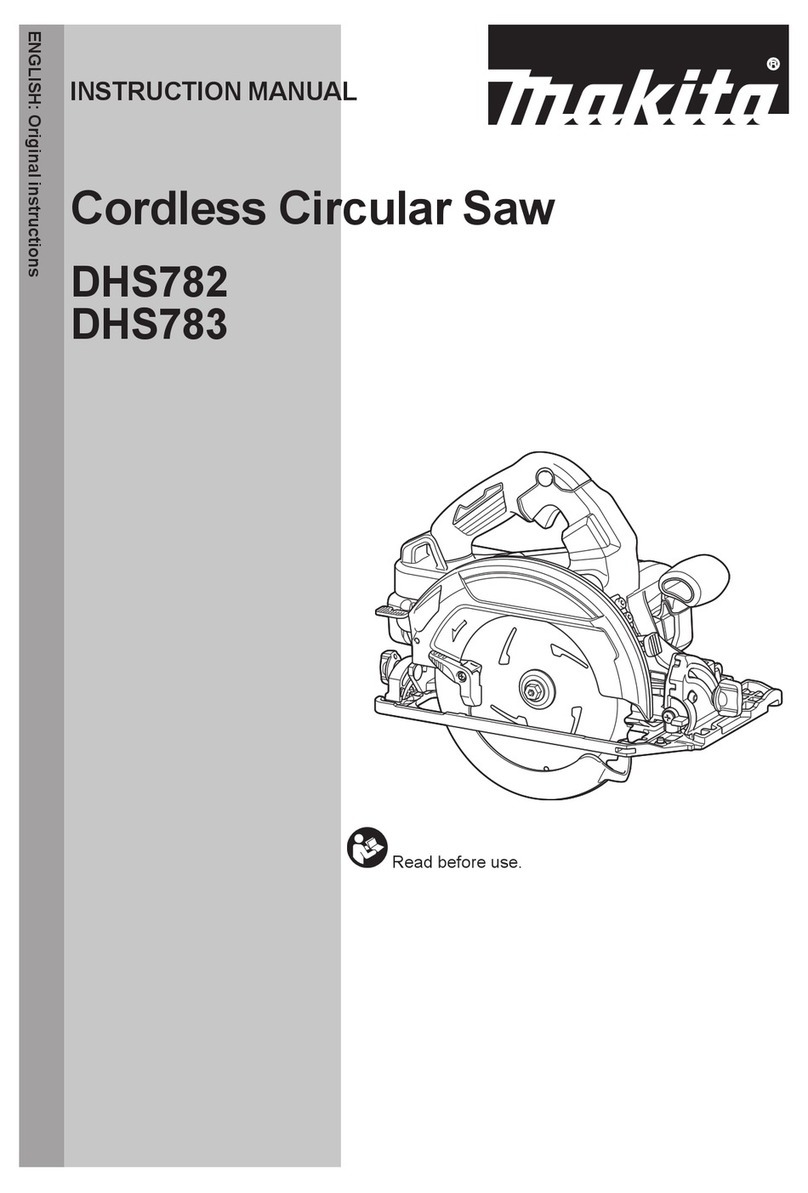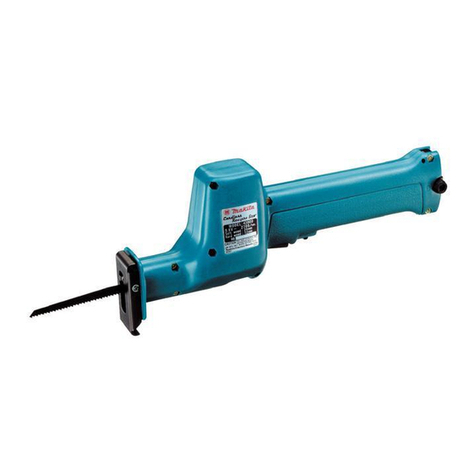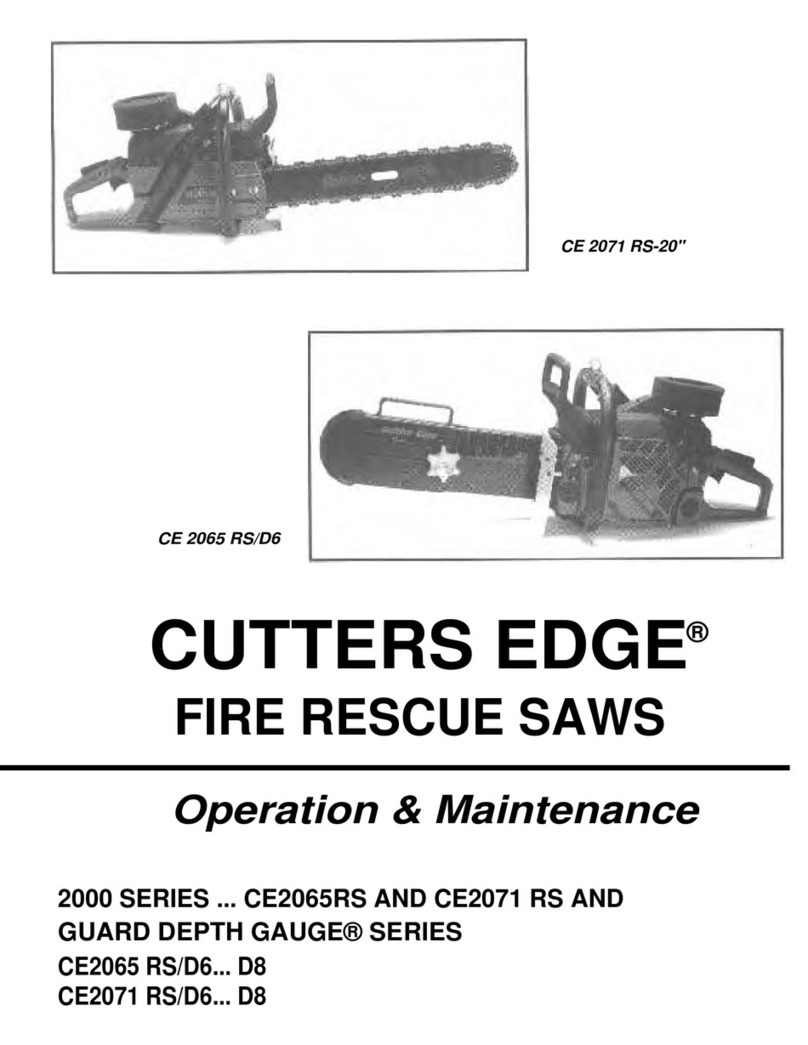
7
English
4. During use, do not pull the cord to move the Box.
Doing so may result in damage.
5. Do not use more that a single cord reel of 30 meters.
Doing so may result in damage.
6. During use, if the machine stops running after the
Box’s LED lamp blinks, confirm the power supply
environment.
7. Do not drag the cord when using or carrying the
machine.
Doing so may tear the cord insulation or break the
cord which could result in electric shock.
8. Do not stretch the cord out any more than required.
When using tools such as gardening clippers or
circular saws, always make sure of the power cord’s
position to avoid cutting the cord during operation.
9. To use the AC/DC adapter after it shuts down due to
high temperature, disconnect the box’s power plug,
wait for the LED lamp to go out and then reconnect
the box’s power plug.
If the machine cuts offeven after sufficiently cooling it
offwith the built-in fan, discontinue use as there may
be a problem with the machine.
10. Do not use this product near a radio. Doing so could
cause noise from the radio, making it difficult to listen
to a broadcast.
11. This is a power source for multi volt products. Do not
use with 18 V products or chargers. Doing so could
result in damage.
12. Overload behavior may differ when compared with
BSL36B18 battery use.
With the battery where the LED should blink on the
main unit, the LED on the AC/DC adapter may blink
instead.
PRECAUTIONS FOR AC/DC ADAPTER
The adapter equips with the protection function to stop
the output. In the cases of 1 to 2 described below, when
using this product, even if you are pulling the switch, the
motor may stop. This is not the trouble but the result of
protection function.
1. If the tool is overloaded, output may stop. In this
case, release the switch of tool and eliminate causes
of overloading.
2. If the adapter is overheated under overload work,
output may stop. In situations like this, discontinue
use of the adapter and detach it from the tool. Allow
the adapter to cool in a location such as a shaded
area with good air circulation.
CAUTION ON LITHIUM-ION BATTERY
To extend the lifetime, the lithium-ion battery equips with
the protection function to stop the output.
In the cases of 1 to 3 described below, when using this
product, even if you are pulling the switch, the motor may stop.
This is not the trouble but the result of protection function.
1. When the battery power remaining runs out, the
motor stops.
In such case, charge it up immediately.
2. If the tool is overloaded, the motor may stop. In this
case, release the switch of tool and eliminate causes
of overloading. After that, you can use it again.
3. If the battery is overheated under overload work, the
battery power may stop.
In this case, stop using the battery and let the battery
cool. After that, you can use it again.
Furthermore, please heed the following warning and
caution.
WARNING
In order to prevent any battery leakage, heat generation,
smoke emission, explosion and ignition beforehand,
please be sure to heed the following precautions.
1. Make sure that swarf and dust do not collect on the
battery.
○
During work make sure that swarf and dust do not fall
on the battery.
○
Make sure that any swarf and dust falling on the
power tool during work do not collect on the battery.
○
Do not store an unused battery in a location exposed
to swarf and dust.
○
Before storing a battery, remove any swarf and dust
that may adhere to it and do not store it together with
metal parts (screws, nails, etc.).
2. Do not pierce battery with a sharp object such as a
nail, strike with a hammer, step on, throw or subject
the battery to severe physical shock.
3. Do not use an apparently damaged or deformed
battery.
4. Do not use the battery in reverse polarity.
5. Do not connect directly to an electrical outlets or car
cigarette lighter sockets.
6. Do not use the battery for a purpose other than those
specified.
7. If the battery charging fails to complete even when a
specified recharging time has elapsed, immediately
stop further recharging.
8. Do not put or subject the battery to high temperatures
or high pressure such as into a microwave oven,
dryer, or high pressure container.
9. Keep away from fire immediately when leakage or
foul odor are detected.
10. Do not use in a location where strong static electricity
generates.
11. If there is battery leakage, foul odor, heat generated,
discolored or deformed, or in any way appears
abnormal during use, recharging or storage,
immediately remove it from the equipment or battery
charger, and stop use.
12. Do not immerse the battery or allow any fluids to flow
inside. Conductive liquid ingress, such as water,
can cause damage resulting in fire or explosion.
Store your battery in a cool, dry place, away from
combustible and flammable items. Corrosive gas
atmospheres must be avoided.
000BookCR36DANA.indb7000BookCR36DANA.indb7 2018/12/218:38:122018/12/218:38:12

